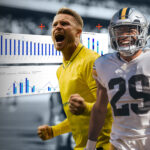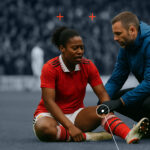We know we should not compare individual athletes to their squad, nor their positional equivalent but to themselves. But how can we do that if we do not know what is truly representative of ‘themself’? They say perception is reality, that no matter how much you believe something to be hard, fast, stiff, a lot, a little, this may never be how your athlete feels. Not only will you and your athlete have different perceptions but your athlete’s perception will change on a daily basis, a standard training session on one day may feel like a mammoth challenge the next.
We accept that objective variables of training can be easily obtained and analysed and we also accept that this does not give us the full picture. Altered perception occurs due to numerous variables, however in the context of sport and training, perception of training and game load can alter due to non-sport stress, mood, coping mechanisms and sleep load (quality*quantity). In order to measure an athlete’s perception of training & game load we need to take both an objective and a subjective approach. We need to measure an athlete’s rate of perceived exertion (RPE), their non-sport stress, their mood, their fatigue, and their sleep load. By doing this we get a true representation of the athlete’s experience of the training/game.
Of additional importance is the influence of these wellness factors on injury incidence whilst in competition or during training.
High perceived stress levels cause decreases in peripheral vision and reaction times. Decreases in mood and increases in anxiety are linked with decreases in concentration and focus, and a decrease in the speed of decision making, known more formally as “hyperdistracability” and “attentional narrowing”. All sports require high levels of concentration and very quick decision making processes. How does an athlete react to an approaching defender if their reaction times are slower, how do they get out of the way of an oncoming tackle if their peripheral vision is narrowed? Both incidents potentially resulting in injury. Alterations in an athlete’s emotional state can result in an increased risk of injury.
The Irish Institute of Sport recently carried out an assessment of 71 of it’s Elite Junior athletes during the 2015/2016 season. They found in the 2 weeks preceding exam time, the reported injury rate nearly doubled with issues comprising of overuse injuries (49%), acute injuries (27%) and illness (24%). See the published report here.
Kitman Labs currently tracks nearly 200 wellness variables across multiple different sports.
We are giving coaches the ability to monitor daily stress (sporting and non-sporting), mood, sleep, and anxiety amongst other data points in the lives of their athletes to assess when an athlete may be at higher risk of injury. Thus an appropriate intervention can be carried out to reduce the risk of injury.




